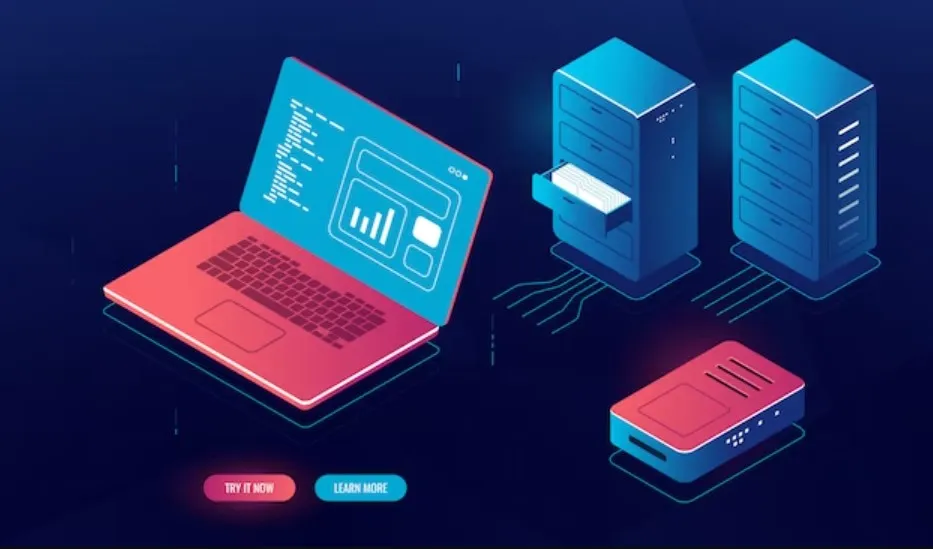Exploring the Characteristics of Big Data: Unveiling Its Power and Potential
In today’s data-driven world, the term “big data” has become a buzzword, transforming the way businesses operate and industry functions. Big data refers to massive volumes of structured and unstructured data that are generated at an unprecedented pace.
Data itself is very crucial for running existing technologies, with Big Data which can store a lot of information. If the analysis process is carried out correctly and accurately, big data can provide quite significant benefits.
This data deluge has led to the emergence of new technologies and methodologies for processing, analyzing, and extracting insights from this information treasure trove. In this article, we delve into the key characteristics of big data, shedding light on its significance and how it shapes our modern world.
10 Characteristics of Big Data You Should Know
Big data is a collection of data that is very large, complex and continues to grow all the time. This data is generated from internet activities that are increasingly routinely carried out, both for personal and business purposes.
For example, initially important information from you might be in the form of data on your name, address and telephone number. But nowadays, the data you have is increasingly diverse, including posts on social media, shopping history on marketplaces, and even searches on search engines that show your interest in a topic.
For information, here are 10 types of characteristics of Big Data that you need to know.
1. Characteristics of Big Data: Volume

The first characteristics of the big data concept is the volume it has. Big data has a very large volume value. The volume of data in question can be very large, even on a zettabyte scale.
In fact, it is for this very large volume reason that the mention of Big Data originates. The massive volume of big data is characterized by the need for exclusive infrastructure to store, manage and analyze existing data.
Read: Unveiling the Power of Chatbots: What is a Chatbot and How Does It Work?
The volume of big data continues to grow over time. Various sources even say that the amount of data continues to increase exponentially, with 90% of the world’s data generated in the last few years alone.
For example, the following is an illustration of the large volume of big data.
- Social medias: Millions of people around the world use social media platforms such as Facebook, Twitter, Instagram and LinkedIn to share information, images, videos and more. Each of the billions of posts, comments and interactions that occur on the platform becomes new data.
- Sensors and IoT: The Internet of Things (IoT) has connected many devices, sensors, and machines that generate large amounts of data. Examples include sensors on vehicles, connected health devices, weather sensors, and many more. The data generated by IoT networks can reach very large volumes and continues to increase with the adoption of this technology.
- Financial transactions: Every time a financial transaction is carried out, there is data recorded for each transaction information, such as the amount, date, location and parties involved in the transaction.
The large volume of big data will require a different analysis and handling process when compared to traditional data. This exponential growth challenges organizations to adopt scalable storage and processing solutions to manage and derive value from the vast datasets.
2. Velocity

The next characteristics of Big Data is Velocity. This condition is also a very important characteristic in the world of big data today. Velocity refers to the speed at which data is generated and collected.
The speed referred to here is how quickly a company can obtain, store and manage new data. With a lot of data generated in real-time, companies can access, process and analyze this data quickly so that valuable information can be obtained in real-time too.
Baca Juga: Chatbot Software for Business, 10 Best Recommendations
In order to manage speed in big data, companies need to consider the right technological infrastructure, such as real-time data processing systems, the use of parallel algorithms, and processing tools that can operate at high speed.
For example, if you search in the Google search engine, you can see how much data is processed on the left, such as œabout 1,000,000 results.
3. Variety

The data included in big data does not only come from one single source or type of data, but also from various types of heterogeneous data. So, big data also includes types of data such as text, images, audio, video, and many more.
Big data encompasses a wide array of data types, including structured, semi-structured, and unstructured data. Each type of data will certainly require different handling in the analysis and management process.
• Structured data
Structured data is data that has elements that can be accessed such as keys (primary key, relational keys, foreign keys) to be analyzed or data that is stored in a certain format, for example data in a relational database or SQL database.
Read: What is Chat GPT? Benefits and How to Use It!
An example of structured data is financial transaction data with columns such as date, amount, customer name, and so on.
• Semi-structured data
Information that is not stored in a relational database but has a pattern or is neatly organized so that it is easier to analyze, with a little processing we can save this data into a relational database, for example data in XML and CSV files which are often used to export data to databases.
• Unstructured Data
Information or data that is not well organized due to its nature, or does not have a predefined data model or a model that has been defined, for example image, sound, video, pdf files, log files and others.
4. Veracity

The next type of Characteristics of Big Data that you need to know is Veracity. This term refers to the reliability, accuracy, and validity of the data involved in big data analysis. Data that is inaccurate, incomplete, or unreliable can certainly damage the accuracy of the data analysis.
Read: AI Tools to Make Presentations, 6 Best Recommendations!
To ensure data quality, companies must control and supervise the process of how the data is generated and managed. Given the diverse sources and formats of data, ensuring data quality can be challenging. Inaccurate or inconsistent data can lead to erroneous conclusions and decisions. Data cleansing, validation, and quality assurance processes are vital to maintaining the integrity of the insights drawn from big data analytics.
5. Characteristics of Big Data: Value

The next type of Characteristics of Big Data that you need to know is value. This could be the most important “V” of big data for business. In the context of big data, the data stored must have value as demonstrated by the benefits and profits that can be obtained from processing, analyzing and utilizing the data.
The ultimate goal of big data analysis is to extract value from the massive datasets collected. The insights derived from big data analytics empower organizations to make informed decisions, identify trends, optimize processes, and enhance customer experiences.
For example, retailers use big data to understand consumer preferences, allowing them to tailor marketing campaigns and product offerings to specific target audiences.
Read: 10 Best AI tools for writers, You Might Need
Often, the results that come from big data analysis often provide interesting and unexpected results. But for business data collection purposes, big data analytics must be able to provide insights that can help businesses become more competitive and resilient and serve their customers better.
Modern big data technologies have unlocked the capacity to collect and retrieve data that can provide measurable benefits to both the bottom line and operational resilience. So that operations and business goals can be maintained more optimally.
6.Validity

The next characteristics of Big Data is validity. Like veracity, validity reviews the accuracy and precision of the data, but validity specifically describes that the data used must be in accordance with the needs.
Companies must be able to sort the right data in order to make accurate policies or decisions. Making the right decisions will enable the Company’s operations and goals to be achieved more optimally.
7. Variability

The next type of Characteristics of Big Data is variability. This characteristic of big data is closely related to data inconsistency. Variability of data refers to the inconsistency of the data produced.
Inconsistencies in data can arise because in big data, data is obtained from various sources and can contain data in different formats. Another inconsistency that can arise in big data analysis is inconsistency in the speed of loading data into the database.
Read: Big Data in Marketing and Its 6 Benefits
Inconsistencies in data can affect the level of reproducibility of the data. To overcome data variability, companies must develop a program that can detect outliers in the data.
8. Venues

The next characteristics of Big Data is the venue. This one characteristic can also be a very important indicator in the process of determining big data analysis for various business needs.
Venue refers to the heterogeneous characteristics of data sources. This characteristic illustrates that big data comes from various sources and is stored in various locations, such as in the cloud or data center.
9. Vocabularies

Vocabulary is also included in the following Characteristics of Big Data. Big data uses a variety of terminology and language. As previously stated, big data can contain various types of data, including unstructured and semi-structured data, which are difficult to extract and analyze using SQL.
To analyze this type of data, a technique known as natural language processing (NLP) is needed which can understand the context of the words or phrases contained in the data.
Read: 6 AI Products Made by OpenAI
The Vocabulary shows that big data requires language, schema, semantics, and data models that can describe the structure and content of data, so that data can be analyzed. The hope is that the resulting analysis process will be more accurate and optimal.
10. Characteristics of Big Data: Vagueness

The last characteristics of Big Data is Vagueness. These characteristics illustrate the challenges in interpreting and understanding the meaning contained in big data. Based on the previous description of the characteristics of big data, you may already realize that good understanding and skills are needed to analyze big data.
Read: 7 ChatGPT Features That Make Your Work Easier
There needs to be more attention and supervision related to data quality, context, and the limitations of big data. With this more supervision, it is hoped that existing data will become more accurate and can provide more precise analysis results.
Conclusion
Big data is a very important part of the current era of digital technology. The presence of big data can provide new potential values so that it can bring opportunities that may not have been seen before.
Embracing big data’s characteristics enables businesses to gain a competitive edge, optimize operations, and deliver tailored experiences that cater to the evolving needs of their customers and the dynamic market.
In conclusion, the characteristics of big data – volume, velocity, variety, veracity, variability, value, complexity, and context – collectively shape the landscape of modern data-driven decision-making. As organizations continue to harness the power of big data, they must adopt innovative technologies, data management strategies, and analytical methodologies to unlock its full potential.
